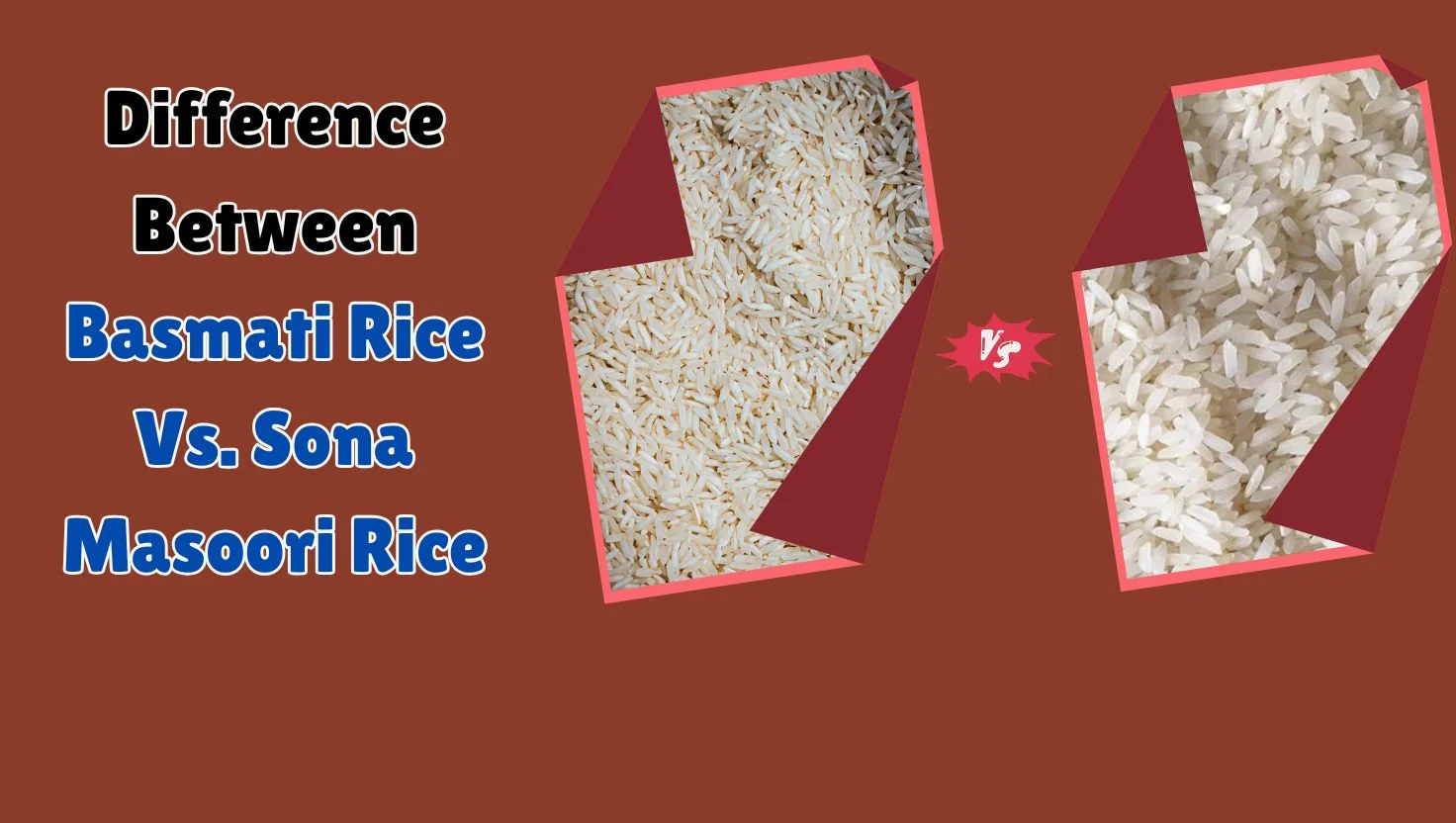Rice is the staple food for almost everyone and everywhere, especially when it’s about India, it has no dearth of different varieties of rice, featuring different taste, size, and price too. However, basmati vs. sona masoori rice are famous varieties of rice that is often discussed among people who are not just rice lovers but also health conscious.
India has varieties of rice that are rich in delicacy, flavour, aroma, and nutritional facts. While choosing the appropriate rice for haute cuisine, buyers usually get confused between sona masoori rice vs. basmati rice. This blog by Shri Lal Mahal will help you dig deeper into the basic differences between sona masoori and basmati including their benefits, characteristics, cooking properties, etc.
About Basmati Rice and Sona Masoori Rice Details
Basmati Rice
Basmati Rice is a distinguished variety of rice famous for its exceptional aroma and delicious taste. Basmati Rice is grown primarily in the Indian subcontinent and is widely famous in India and Pakistan. Basmati rice originates in the Himalayan foothills of India and Pakistan, as the name suggests “Basmati” means “scented” in Hindi; and has been derived from Sanskrit Language. Thus, the rice satisfies and goes well with its description: the wonderful aroma. As per the historical facts, basmati rice has grown in regions such as the provinces of Punjab and Haryana, where the unique soil and climate contributed to the qualities of this variety of rice making it uniquely different from others.
However, there are several reasons that compels consumers of both sona masoori and basmati rice to enquire about basmati vs. sona masoori rice.
Sona Masoori
Sona Masoori Rice is a popular South Indian Variety grown mainly in the Indian states of Andhra Pradesh and Telangana, and Karnataka having a medium-grain size and delicate textures. It is a non-basmati rice variety that is light in colour and popularly known for its cooking qualities. It has been derived from the word “gold” which means “Sona” in Hindi and has obtained the name due to the golden colour that it obtains during its cooking. Though both Sona Masoori rice vs. basmati rice can be used for making biryani, but Sona Masoori works well with South Indian Biryani along with curry and rice. One of the most basic difference between sona masoori and basmati rice that consumers of rice often look-after is the calorie content that is less in Sona- Masoori in comparison to Basmati Rice.
Is Basmati Rice Healthy or Sona Masoori?
Though both are good varieties of rice and we at Shri Lal Mahal is exporter and manufacture both basmati and non-basmati rice of best quality, Sona Masoori can be used for a wide variety of dishes whereas Basmati rice is mostly used as a raw material for only biryani dishes. Given below are some common points of distinction among the two rice varieties.
- Grain Size and Shape
Grains of Sona Masoori are smaller and shorter in size in comparison to long and slender grains of Basmati rice. This difference in shape usually affects how the cooked rice looks and feels.
- Aroma and Flavour
Even when uncooked, basmati rice has an appealing aroma that tells how good the variety is, it is simply more aromatic than sona masoori. Basmati rice, owing to its cultivation region gives a hint of earthiness and sweetness. Next time, when someone asks you Basmati Vs. Sona Masoori in terms of aroma you ought to select Basmati Rice.
- Nutritional Content
Both types of provides ample amount of energy through carbs. However, Sona Masoori is usually considered the healthier option as it contains less starch and easier to digest. When its about health benefits one common question that comes often is the glycemic index of Basmati Rice vs. Sona Masoori, as per a study Sona Masoori Rice has a lower glycemic index (GI) that is below 55, however both basmati and non-basmati rice usually have a low GI level. For the unversed, Glycemic Index abbreviated as GI level is a numerical scale that ranks carbohydrate-containing foods based on their response to raise blood sugar levels after consumption.
Basmati Rice Vs. Sona Masoori Rice – Nutritional Comparison
| Nutrient | Basmati | Sona Masoori |
|---|---|---|
| Calories | ~200 per cup (cooked) | ~150 per cup (cooked) |
| Carbohydrates | ~45g per cup | ~35g per cup |
| Protein | ~4-6g per cup | ~4-5g per cup |
| Fiber | ~1g per cup | ~1.2 g per cup |
| Glycemic Index | Moderate (58-65) | Low (56) |
| Gluten-Free | Yes | Yes |
Sona Masoori Rice Vs. Basmati Rice: Cooking Properties
Sona Masoori usually cooks faster than Basmati Rice and requires less water in comparison to Basmati Rice. Basmati rice usually requires more attention to get the right texture and to keep the grains separate. To improve its texture basmati rice is soaked before cooking.
Because of its high nutrient-value sona masoori is ideal for daily consumption and is the most sought-after meal with sambar, puli kolambu, rasam or to cook sweet Pongal.
Sona Masoori Vs. Basmati – A Quick Comparison
| Parameters | Basmati Rice | Sona Masoori |
|---|---|---|
| Areas of cultivation | Mainly grown in Northern India | Mainly grown in Southern India |
| Grain length | Long-grain | Medium-grain |
| Nutrition | Polished, fewer nutrients, higher calories and starch | Unpolished, higher nutrients, lower calories and starch |
| Flavour | A nutty, floral flavour | A starchy but rich flavour |
| Aroma | Highly aromatic | Slightly aromatic |
| Cooking | Ideal for cooking exotic dishes like biryani | Ideal for South Indian dishes like sweet Pongal |
Common Recipes with Sona Masoori Rice
Yellow lentils Rice Khichudi
Ingredients:
- 1 cup Sona masoori scented rice
- 1/2 cup roasted yellow split moong daal
- 1/3 cup coconut powder
- 2 bay leaves
- 1 Tsp cumin seeds
- 1.5 Tsp ghee
- 2 Tbsp sugar
- 1 Tsp salt
- 2 cups water
- 3 almonds chopped
- 4 cranberries
Cabbage Pulav
Ingredients:
- 1 cup Rice precooked and cooled (I used regular Sona Masoori)
- 1/2 Cabbage of a medium one. chopped to think strips
- 1 Capsicum medium chopped to strips
- 1 Tomato large chopped
- 1 tsp Cumin seeds
- 1/2 tsp Fennel seeds
- 1/2 tsp Shah jeera
- 1 inch Cinnamon stick
- Salt as per your Taste
- 1/2 tsp Turmeric powder
- 1 tsp red chilli powder(regular)
- 1 tsp Coriander powder
- 1 tsp Fennel Powder
- 1/2 tsp Garam Masala powder
- 1 tbsp Oil for sauteing
Common Recipes with Sona Masoori Rice
Veg. Biryani
Ingredients:
- Basmati Rice (Shri Lal Mahal Empire Basmati Rice)
- Onion & Tomatoes
- Vegetables
- Spice Powders
- Fresh Masala (Ginger, garlic, Coriander, and Mint leaves)
To Wrap Up
Though we have helped you to find the difference between Basmati Vs. Sona Masoori rice, it’s worth to note that both are highly nutritious, healthy, and good to include in your daily foods. The Choice depends on you and your condition that are subject to health, choice, and requirements. If you are bored from same taste of rice, you can try sona masoori rice whereas if you wish to organise a grand party at your home, you can try basmati rice that ensures your visitors will enjoy the party at least for the days to come.
Frequently Asked Questions
Yes, you can eat sona masoori rice daily however moderation is key for all such consumables, and over consumption can result in several health problems, such as weight gain, nausea, indigestion, etc.
Basmati rice usually has lower glycemic index that typically ranges between 50 and 58
Yes, Shri Lal Mahal is a leading exporter and manufacturer of both basmati and non-basmati rice, you can order both varieties of rice from https://shrilalmahal.org/ or contact us to know more about it.

